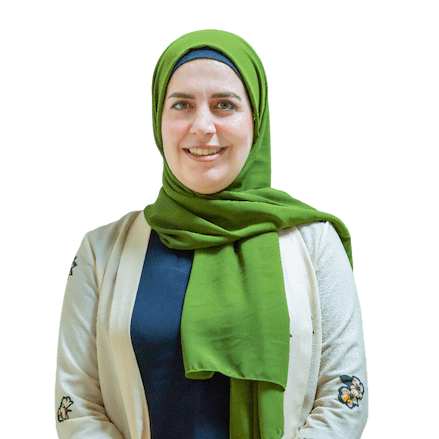Written By: Dr. Agatha Ruby Moniz
Dr. Agatha Ruby Moniz, specialist in obstetrics and gynaecology with focus on minimally invasive surgery is posted. Her impressive credentials include an MBBS from University of Mysore, India, DGO and MD (Ob/Gyn) from University of Mangalore, India, and MRCOG and FRCOG from UK.
Updated On:January 30, 2025
Read more.

Stages of Foetal Development
Foetal development is a complex and well-organized process. It starts even before you become aware that you are expecting a child and concludes after the child is born. There are several intricate procedures that must be followed between conception and delivery.
The three phases of foetal development are called germinal, embryonic, and foetal stages. It can be useful to know, even if most people don't discuss pregnancy in these terms.
Germinal Stage
The shortest stage of foetal development is called the germinal stage. When a sperm and an egg unite in your fallopian tube during conception, it starts. The zygote is produced when the sperm fertilizes the egg. Over the course of around a week, the zygote starts its descent into your uterus. The zygote splits several times throughout this process, ultimately producing two distinct structures. Ultimately, one structure develops into the embryo and, subsequently, the foetus, while the other becomes the placenta. Cell division is still happening quickly. The zygote eventually develops into a blastocyst. When the blastocyst reaches your uterus, it attaches itself in the lining of your uterus. The moment implantation goes well, your body starts generating the necessary hormones to sustain a pregnancy. Additionally, this ends your menstrual cycle.
Embryonic Stage
The embryonic stage of pregnancy lasts from the end of the eighth week of pregnancy, or around the third week. The blastocyst starts exhibiting traits unique to humans. We now refer to it as an embryo. The neural tube, which gives rise to the brain and spinal cord, as well as the head, eyes, mouth, and limbs, are among the structures and organs that develop. At five or six weeks, the cells that will make up the foetal heart start to clump together and have the ability to beat. Around week six, buds that eventually grow into limbs and legs also begin to appear. The majority of the embryo's systems and organs begin to take shape by the end of the eighth week. This is often the time of pregnancy when morning sickness starts for most women.
Foetal Stage
Around the ninth week, the foetal stage of development starts, and it lasts until delivery. At this point, the embryo formally becomes a foetus. Though it is not yet visible on an ultrasound, the foetus has its assigned sex at about nine weeks of pregnancy. The main bodily systems and organs of the foetus keep developing and growing. Hair, lashes, and fingernails are examples of growing things. You might not feel the foetus moving its limbs until 20 weeks into the pregnancy, but it is capable of doing so. Most of the growth occurs during the foetal stage, both in terms of weight and length.
Stage Growth Week by Week
During a normal pregnancy, the foetus will undergo significant changes. Trimesters are the divisions of this period of time into three phases. A trimester consists of approximately three months.
Trimester One (Week 1 to 12)
The first trimester lasts for 12 weeks after fertilization. Usually, the first three months of pregnancy are during this time. The fertilized egg will grow from a tiny collection of cells to a foetus that starts to take on human characteristics throughout this trimester. While the first trimester is joyful, it's also the time when most individuals experience unpleasant symptoms like exhaustion and morning sickness.
Week 1-2: The first two weeks of pregnancy are a "getting ready" phase, notwithstanding this peculiarity. Your uterus gets ready for a possible pregnancy as your body gradually produces more hormones. Your ovary produces an egg near the end of the second week, a process known as ovulation. After ovulation, if sperm and egg come into contact, the process of becoming pregnant continues.
Week 3: The third week is when fertilization takes place. A zygote is formed when an egg and sperm combine.
Week 4: Your uterine lining becomes implanted with a blastocyst, which is a small bundle of cells. The placenta's precursor starts to take shape. Enclosed in a waterproof sac is the blastocyst. This is the amniotic sac, which gives a foetus support and cushioning throughout pregnancy. The blastocyst is around two millimetres (mm) long at the end of the fourth week, or the size of a poppy seed.
Weeks 5 through 8 of month two: Most people become aware that they are pregnant around the second month of their pregnancy. An at-home pregnancy test will come out positive around the fifth week or so when pregnancy hormones go into overdrive.
Week 5: The brain, spinal cord, and other central nervous system neural tissue form the neural tube. By the conclusion of the fifth week, the little "heart" tube will pulse 110 times per minute.
Week 6: Little buds that grow into arms and legs also begin to form. The formation of blood cells will lead to the start of circulation. The ear, eye, and mouth structures begin to take shape. On a vaginal ultrasound, your healthcare professional can most likely see pulses in the cluster of cells that will eventually form the heart.
Week 7: Genitalia start to develop as bones start to replace soft cartilage. The head of the embryo is big compared to the rest of its body. Some individuals believe that the embryo looks like a little seahorse or tadpole.
Week 8: Every major bodily system and organ is growing. The hands and feet of the embryo resemble webs. Ears start to develop and eyes become evident. The completely formed umbilical cord assists in supplying the developing embryo with blood and oxygen. Healthcare professionals refer to the embryo as a foetus after the eighth week. Until it is born, it will remain a foetus. The foetus is around 0.5 to 1 inch (in) long at the end of the second month, or the size of a black bean.
Week 9: Taste buds and teeth are starting to develop. Its body shape becomes more human-like as its muscles begin to grow. Yet its head still makes up half of its length. Using a Doppler ultrasound, your physician might be able to hear its heartbeat.
Week 10: There are no longer any webbed fingers, and the arms, hands, fingers, feet, and toes are fully developed. The external ears form, and fingernails and toenails start to grow. Though they are too early to be visible on an ultrasound, the external genitals also start to develop.
Week 11: The foetus is beginning to move its lips and fists, indicating that it is beginning to explore a little. Although its ankles, elbows, and knees are functioning, it is too early to detect kicks. Its skin is still translucent, but the bones are getting harder. Features on the face are more noticeable.
Week 12: Every organ, limb, bone, and muscle is present and will grow further to reach complete functionality. The liver generates bile, and the digestive, urinary, and circulatory systems are also operational. Amniotic fluid is being consumed and excreted by the foetus.
After 12 weeks (the end of the first trimester), your likelihood of miscarriage significantly decreases since the most crucial development has occurred. This is also when most individuals start to feel somewhat better from morning sickness. The foetus is around the size of a plum at the end of the third month, measuring between 2.5 and 3 inches in length.
Trimester Two (Week 13 to 28)
Pregnancy is often regarded as having its finest phase during the second trimester. By now, the pain of the early stages of pregnancy should have subsided and any morning sickness should be gone. Additionally, when the foetus spins and flips inside your uterus, you can begin to feel movement. Many people learn the sex allocated to the foetus during this trimester. This is usually carried out at about 20 weeks during an anatomy scan, which is an ultrasound that examines physical development.
Week 13: The foetus's huge head starts to develop proportionately to its body, and vocal cords begin to form.
Week 14: Fine hair starts to form as the foetus's skin thickens. It can move its head and begin putting its fingers to its mouth. Fingerprints start to take shape as external genitalia reach complete development.
Week 15: The intestines and ears are among the organs that are transitioning to their permanent locations. The foetus's lungs are starting to form, but it still practices breathing using amniotic fluid. The foetus starts to move with more intention, such as sucking its thumb or grinning.
Week 16: The developing foetus can hear you speak because it has lips and ears. The foetus may react to light by rotating away from it, despite having closed eyes.
Week 17: The foetus will begin to gain fat, although its skin is still thin. Its skin is coated with a white substance known as vernix. It is believed that this “cheesy” protein shields embryonic skin from prolonged contact with amniotic fluid.
Week 18: The foetus has lanugo, or hair that resembles peach fuzz, all over it. It adds another degree of protection and keeps the foetus warm. The foetus may have a sleep-wake cycle, and if it is sleeping, strong noises may wake it.
Week 19: Most individuals start to feel punches and kicks as the foetus gets stronger. The foetus may hiccup and have a distinct set of fingerprints of its own.
Week 20: The fingertips of the o begin to sprout nails. The part of the brain in charge of the five senses starts to grow.
Week 21: There is frequent and coordinated limb movement. The foetus's bone marrow aids in the production of blood cells.
Week 22: The foetus can touch its ears and the umbilical cord and its grasp is becoming stronger. It has the ability to hear your breathing, heartbeat, and stomach rumbling.
Week 23: With careful care after the 23rd week, a prematurely delivered foetus may survive. It will start rapidly gaining body fat.
Week 24: Although the foetus's lungs are fully formed, they are still too immature to function outside of your uterus.
Trimester Three (Week 29 to 40)
This is when your pregnancy starts coming to an end. Each week of this last stage of development helps the foetus get ready for delivery, even if you might be tempted to start counting down the days until your due date and hope that it arrives early. The foetus rapidly acquires weight during the third trimester, accumulating body fat that will be beneficial after delivery.
Week 29: Now that the foetus is beginning to cramp inside the amniotic sac, you might notice that the kicks and jabs seem more like pokes.
Week 30: The foetus has self-control over body temperature. Its brain is expanding and maturing quickly.
Week 31: The foetus is capable of processing more inputs and information. There are definitely more noticeable differences between its sleeping and waking cycles.
Week 32: The skin of the foetus has stopped being transparent. The majority of the organs, save the brain and lungs, are developed and prepared for delivery.
Week 33: The foetus is beginning to solidify in all areas except the brain, which must remain soft in order for it to pass through the birth canal.
Week 34: The skin-protecting vernix of the foetus begins to thicken.
Week 35: Although the foetus's brain is still growing, its birth weight is still just two-thirds of what it should be.
Week 36: The foetus develops hair on its head and loses its lanugo.
Week 37: The foetus reaches the tip of its toes. The foetus may begin to descend toward your pelvis.
Week 38: In order to reach its final size, the foetus is gaining 0.5 pounds per week.
Week 39: The foetus is ready to greet the world at full term!
Week 40: This is the week of your due date. If you experience any labour-related symptoms, contact your pregnancy care provider.
References
Alexander, J. M., McIntire, D. D., & Leveno, K. J. (2000). Forty weeks and beyond: pregnancy outcomes by week of gestation. Obstetrics & Gynecology, 96(2), 291-294.
O'rahilly, R., & Müller, F. (2010). Developmental stages in human embryos: revised and new measurements. Cells Tissues Organs, 192(2), 73-84.
Spong, C. Y. (2013). Defining “term” pregnancy: recommendations from the Defining “Term” Pregnancy Workgroup. Jama, 309(23), 2445-2446.
Tan, C. M. J., & Lewandowski, A. J. (2020). The transitional heart: from early embryonic and fetal development to neonatal life. Fetal diagnosis and therapy, 47(5), 373-386.
Meet our doctors from the Obstetrics & Gynaecology department
|
||||||||
|
||||||||
|
||||||||
|
||||||||
|
||||||||
|
||||||||
|
||||||||
|
||||||||
|
||||||||
|
||||||||
|
||||||||
|
||||||||
|
||||||||
|
||||||||
|
||||||||
|
||||||||
|
||||||||
|
||||||||
|
||||||||
|
||||||||
|
||||||||
|
||||||||
|
||||||||
|
||||||||
|
||||||||
|
||||||||
|
||||||||
|
||||||||
|
||||||||
|
||||||||
|
||||||||
|
||||||||
|
||||||||
|
||||||||
|
||||||||
|
||||||||
|
||||||||
|
||||||||
|
||||||||
|
||||||||
|
||||||||
|
||||||||
|
||||||||
|
||||||||
|
||||||||
|
||||||||
|
||||||||
|
||||||||
|
||||||||
|
||||||||
|
||||||||
|
||||||||
|
||||||||
|
||||||||
|
||||||||
|
||||||||
|
||||||||
|
||||||||
|
||||||||
|
||||||||
|
||||||||
|
||||||||
|
||||||||
|
||||||||
Similar Posts
teleMEDCARE App
Download teleMEDCARE app from Google Play or App Store to connect immediately to Medcare doctors at a click of a button and without an appointment.

Home Services
We offer our patients a broad range of home health care services in the comfort of their own homes. Book an appointment for lab tests, vaccinations, nurses and physiotherapists.

Chronic Care
Know more about our Chronic Care Management Programme in partnership with Damana Saicohealth.

teleMEDCARE App mobile
Download teleMEDCARE app from Google Play or App Store to connect immediately to Medcare doctors at a click of a button and without an appointment.

Home Services
We offer our patients a broad range of home health care services in the comfort of their own homes. Book an appointment for lab tests, vaccinations, nurses and physiotherapists.

Spotii
We have partnered with Spotii to offer a more flexible way to pay - Pay over time for your purchase. No interest, no cost & no catch.






































































